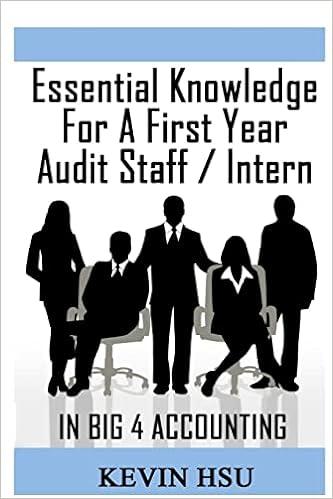Question
Harry Carson is analyzing Tucson Corp., a manufacturing firm which follows US GAAP. He has gathered the financial information shown below in Exhibits 1, 2,
Harry Carson is analyzing Tucson Corp., a manufacturing firm which follows US GAAP. He has gathered the financial information shown below in Exhibits 1, 2, and 3. Corporate income is taxed at a flat rate of 28%.
Exhibit 1: Tucson's current capital structure
| Market Value (millions) | Required return | |
| Bonds | $500 | 4.0% |
| Common stock | $700 | 7.0% |
| Total Capital | $1,200 |
Exhibit 2: Selected financial data for Tucson (20X6)
| (millions) | |
| Revenues | $1,604 |
| Depreciation expense | $50 |
| Interest expense | $13 |
| Fixed capital investment | $80 |
| Net income available to common shareholders | $145 |
Exhibit 3: Selected balance sheet data for Tuscon
| As of 31 December (in millions) | 20X6 | 20X5 |
| Cash and cash equivalents | $118 | $105 |
| Accounts receivable | $265 | $234 |
| Inventories | $589 | $583 |
| Total current assets | $972 | $922 |
| Accounts payable | $74 | $63 |
| Notes payables | $70 | $83 |
| Other current liabilities | $507 | $506 |
| Total current liabilities | $651 | $652 |
Carson then talks to his colleague, Mitchell Saunders, who forecasts that Tuscon's net income will be $160 million in 20X7 and that the following assumptions can be made for 20X7 and beyond:
- Net fixed assets will increase by 20% of net income annually
- Annual investments in working capital will be 35% net income
- Target capital structure is 70% equity, 30% debt, and no preferred stock
- Free cash flow to the firm (FCFF) will be 75% of net income and grow by 3.0% annually
- Free cash flow to equity (FCFE) will grow by 4.1% annually
- The firm's cost of equity will remain at its current level and its weighted average cost of capital will be 4.9%
Carson then asks another colleague, Wendy Pritchard, about the proper method to value the firm. Pritchard makes the following statements: Statement 1: "Tucson pays dividends that are closely linked to its capacity to pay dividends since its Board of Directors have approved a constant dividend payout ratio policy. Therefore, free cash flow methods are preferred. Dividend discount models are invalid." Statement 2: "Tucsons capital structure seems unstable since it might issue a large amount of long-term debt in the next couple of years. Therefore, Tucson should use the FCFE method rather than the FCFF method to value the company." Statement 3: "The market consensus is that a private equity firm intends to acquire a large share of Tucson stock to take control of the company. Therefore, free cash flow measures are more appropriate than dividend discount models." Finally, while discussing alternative methods of computing free cash flow with Pritchard, Carson makes the following comment: We must adjust for after-tax interest since interest paid is considered an operating cash flow under US GAAP. Also, Tucson has just announced that it will take more tax deductions than assumed when reporting its deferred tax asset. Tucson would most accurately estimate free cash flow by subtracting the deferred tax asset from its free cash flows.
Question:Based Saunders assumptions, what is the value of Tucsons common equity as of 31 December 20X6?
Step by Step Solution
There are 3 Steps involved in it
Step: 1

Get Instant Access to Expert-Tailored Solutions
See step-by-step solutions with expert insights and AI powered tools for academic success
Step: 2

Step: 3

Ace Your Homework with AI
Get the answers you need in no time with our AI-driven, step-by-step assistance
Get Started


